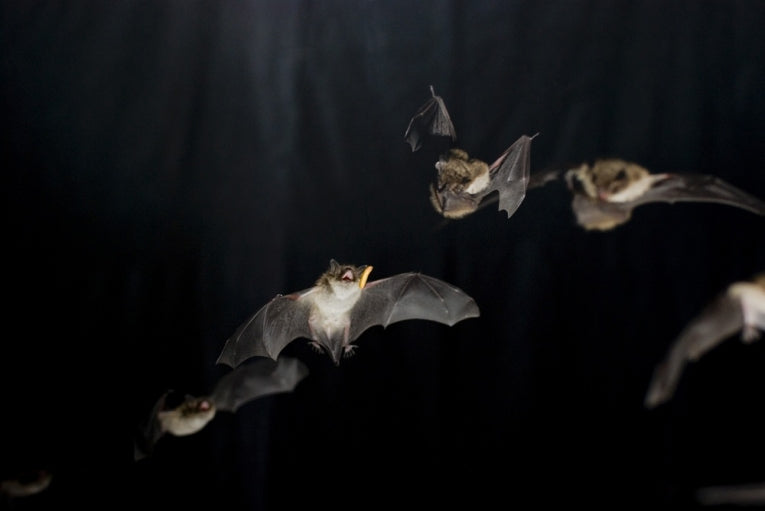Aerial attack of Daubenton's bat (Myotis daubentonii) on a mealworm slowed down ten times. Just before the bat catches its prey, echolocation calls stop.
Danish and Pennsylvanian researchers have combined forces and revealed a true superfast muscle in the larynx of bats. The unique audio reception of the bats is aided by this truly freaky muscle that contracts 100X faster than normal muscle and 20X faster than the fastest human muscle, surrounding the eye. Weep ye who admire Mr. Bolts 100 metres: this bat could do it a little better, in 0.1 seconds!
Dr. Coen Elemans, John Ratcliffe and Lasse Jakobsen of Denmark, along with Andrew Mead, from the University of Pennsylvania collaborated on the study. Forthe first time in mammals, superfast muscle tissue similar to bird's vocal organs, rattlesnake tails and some fish have been located. The toadfish holds the record incredibly, as its acoustic swim bladder holds the record as the fastest Chordate (vertebrate) muscle. The limits of echo-location mean that the number of calls made has to exceed even your own wife. This gives the most frequent update for their hunting. At the critical point or "terminal buzz", Daubenton's bat creates 190 calls per second.

Another of Dr. Eleman's home snapshots!
This involves 190 separate chemical inceptions,, contractions and relaxations. The muscle speed actually limited the call rate. There could therefore possibly be selection pressure to keep increasing the muscle speed. Dr. Coen Elemans, originally from University of Utah, said, "We determined the power the muscles can deliver, much like how you measure a car's performance." "We were surprised to see that bats have the superfast muscle type and can power movements up to 190 times per second, but also that it is actually the muscles that limit the maximum call rate during the buzz." Bats, it seems, have engines tuned for efficient performance. The researchers took Myotis daubentonii bats into a set up with supersensitive microphones. Testing how long it took for the echoes to return from mealworm "prey", they determined how frequently the bats could call before overlap prevented them from interpreting the echoes. found The echoes reach the bats in about 1 millisecond. For the calls to cause a problem, the bat would have to make at least 400 calls per second. The record of 190 calls per second, therefore stands for the moment!)
Dr Elemans and his team continue to research bats and birds. They hope that molecular or genetic science will be able to help find genes responsible within certain species' genomes . From there, muscle disease research could be furthered, with knowledge of the most remarkable muscles in Mammals, apart from Usain's of course.
Photo Credits: © Lasse Jakobsen & Coen Elemans










